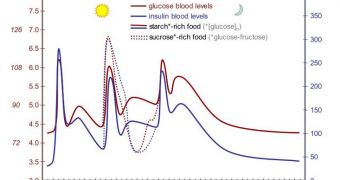The deep economic crisis that affects the world is having effects on a wide array of affects of society, including on people with low-income who suffer from chronic diseases such as diabetes.
These individuals' health is heavily dependent on a certain type of nutrition and menus, and food insecurity due to diminishing wages, unemployment and low income is threatening their health directly.
In a recent study, researchers were able to determine that poorer people who have diabetes were more likely to be concerned about food availability and accessibility, and also a lot more likely than their food-secure peers to exhibit a high body-mass index.
This is very worrying because obesity, diabetes and heart problems generally go hand in hand. People developing one usually show signs of the others as well, and this represents a very expensive public health issue.
Details of this investigation appear in the November/December issue of the esteemed Journal of Nutrition Education and Behavior, Science Blog reports.
The research paper looks at how technology can aid in this regard. Telemedicine is a rapidly-developing field, in which medical information and examinations are provided via audiovisual means such as computers and TV, without healthcare experts actually visiting the sick at home or vice-versa.
In the work, the scientists looked at seniors suffering from diabetes, living in rural areas of the United States. One of the main focuses was the reporting of the absence or presence of food insecurity.
The factors that were considered included obesity or lack thereof, meal planning, and diabetes control. The participants were surveyed after having already received a telemedicine-based intervention.
The team discovered that, after the intervention, food-insecure adults were a lot less likely to report more obesity and other health problems than their food-secure peers.
For the research, food security was defined as the “access by all people, at all times to sufficient food for an active and healthy life includes at a minimum: the ready availability of nutritionally adequate and safe foods, and an assured ability to acquire acceptable foods in socially acceptable ways.”
This is the same definition provided by the American Dietetic Association (ADS). Sadly, the Third National Health and Nutrition Examination Survey determined that no less than 10 percent of US citizens with diabetes were food-insecure.
“Older patients with diabetes commonly do not directly indicate to their primary care provider that money, lack of nutrition knowledge, transportation, physical disability, or other barriers are preventing them from complying with dietary recommendations,” explains Dr. Daria Homenko.
She was the lead author of the new work, which was conducted by investigators at the State University of New York Upstate Medical University.

 14 DAY TRIAL //
14 DAY TRIAL //